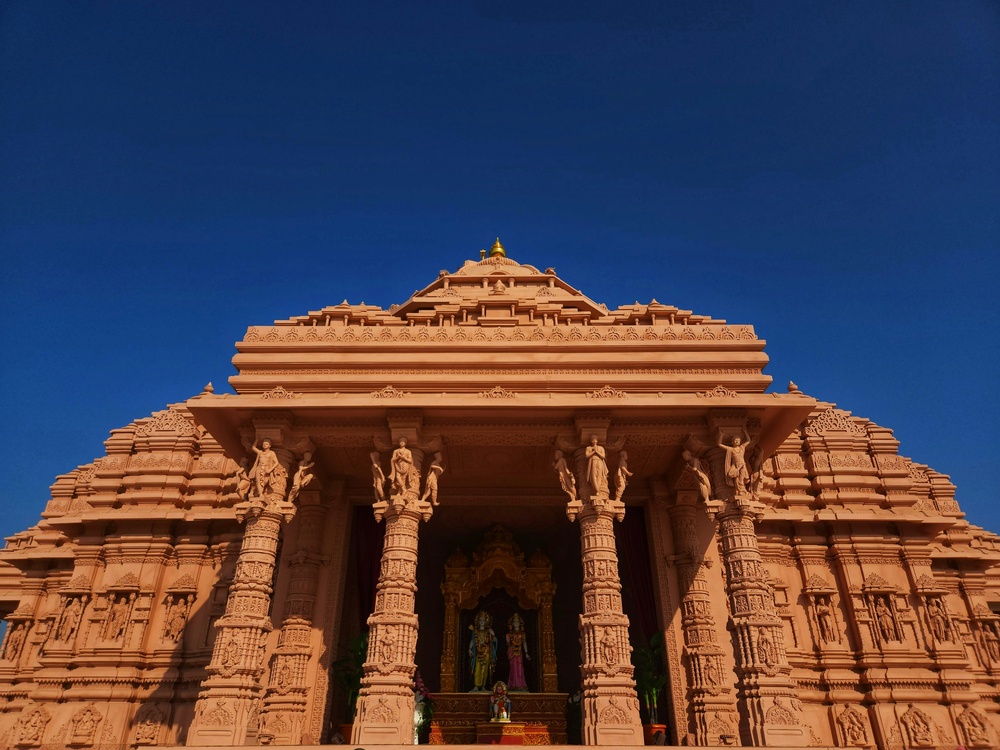When Is the Best Time to Visit Ayodhya for a Spiritual Experience?
Ayodhya, the sacred city on the banks of River Saryu in Uttar Pradesh, holds a special place in the hearts of millions of devotees. Known as the birthplace of Lord Rama, Ayodhya is not just a city but a living embodiment of faith, devotion, and centuries-old traditions. Whether you seek divine blessings, want to explore the temples, or immerse yourself in grand Hindu festivities, knowing the Best Time to Visit Ayodhya will ensure a deeply enriching spiritual experience.
Winter (October to March): The Ideal Time for Spirituality
The winter season, stretching from October to March, is widely considered the Best Time to Visit Ayodhya for a fulfilling spiritual journey. The weather remains cool and pleasant, with temperatures ranging between 8°C and 25°C, making temple visits comfortable and allowing you to participate in rituals without fatigue.
- October – November: This period marks the arrival of the festive season, especially Deepotsav and Diwali. During Deepotsav, Ayodhya is illuminated with lakhs of earthen lamps (diyas) along the ghats, temples, and roads, creating an awe-inspiring divine atmosphere. For spiritual seekers, witnessing the grand aarti on the Saryu River with chants reverberating through the air is an experience of a lifetime.
- December – January: These months bring chilly mornings and evenings but remain perfect for temple darshan. The calm winter air adds to the serenity of early morning aartis at Ram Janmabhoomi and Hanuman Garhi. Pilgrims often prefer this time for peaceful meditation and prayers without heavy crowds, except during New Year holidays.
- February – March: As winter recedes and spring arrives, Ayodhya celebrates Maha Shivratri with devotion at the Nageshwarnath Temple. The pleasant weather and blooming surroundings enhance the spiritual atmosphere, making it ideal for temple visits and sacred river baths.
Summer (April to June): For Devout Pilgrims Prepared for Heat
The summer months, especially May and June, are extremely hot with temperatures soaring up to 45°C. While this is not the most comfortable time for general tourists, deeply devout pilgrims still visit to perform rituals and darshan.
- April – Early May: During this period, the festival of Ram Navami, marking the birth of Lord Rama, is celebrated with grandeur. The entire city comes alive with religious processions, temple decorations, bhajan programs, and spiritual discourses. Despite the rising heat, devotees flock in large numbers to participate in the celebrations, believing it to be the most auspicious time for blessings.
- Late May – June: The heat becomes intense, making daytime temple visits exhausting. However, if you plan your visits early in the morning or during evening aartis, you can still have a meaningful spiritual experience. It is essential to stay hydrated and wear light cotton clothing if visiting during these months.
Monsoon (July to September): A Refreshing Yet Humid Spiritual Journey
The monsoon season brings moderate to heavy rainfall with temperatures ranging between 25°C and 35°C. The rains wash away the summer dust, and Ayodhya appears lush and rejuvenated, but the high humidity can be uncomfortable.
- July – August: These months witness regular rainfall. Though the ghats and temple courtyards become slippery, the sound of temple bells amidst drizzles and the view of rain-washed temples offer a peaceful spiritual vibe. Devotees visit temples for Shravan Maas rituals, especially to worship Lord Shiva at Nageshwarnath Temple during this auspicious month.
- September: The rains begin to recede, and greenery peaks, making it better for travel compared to peak monsoon months. The calm atmosphere with fewer tourists allows for quiet spiritual introspection.
Festivals: The Pinnacle of Spiritual Experience
For those seeking the Best Time to Visit Ayodhya for a deeply spiritual experience, visiting during festivals offers unmatched opportunities:
- Ram Navami (March–April): The celebration of Lord Rama’s birth is the most significant festival in Ayodhya. Devotees gather for elaborate rituals, kirtans, recitals of the Ramayana, and processions with idols of Lord Rama, Sita, Lakshman, and Hanuman. The divine energy during Ram Navami is unparalleled for spiritual seekers.
- Deepotsav & Diwali (October–November): Ayodhya’s Deepotsav has gained global recognition, with lakhs of diyas lighting up the city, symbolising the return of Lord Rama to Ayodhya after 14 years of exile. The grandeur, spiritual fervour, chants, and aartis create a celestial environment, making this undoubtedly the Best Time to Visit Ayodhya for an unforgettable spiritual journey.
- Makar Sankranti (January): Taking a holy dip in the Saryu River on this day is considered highly auspicious, believed to cleanse sins and bring blessings. The ghats remain vibrant with rituals and pilgrim gatherings.
Tips for a Spiritually Enriching Visit
- Attend early morning aartis at Ram ki Paidi for serene spiritual moments.
- Book accommodations early if visiting during Ram Navami or Diwali.
- Hire a local guide to understand the legends behind each temple and ghat.
- Dress modestly as a sign of respect at religious sites.
- Participate in bhajans and satsangs organised at temples for spiritual upliftment.
Conclusion
While Ayodhya remains spiritually vibrant throughout the year, the Best Time to Visit Ayodhya for a spiritual experience is from October to March, especially during Diwali (Deepotsav) and Ram Navami. These months not only offer pleasant weather but also immerse you in the city’s grand celebrations, devotional chants, and divine ambience. Plan your pilgrimage during these months to experience the timeless spiritual essence of this ancient and holy city.


Leave a Reply
Want to join the discussion?Feel free to contribute!